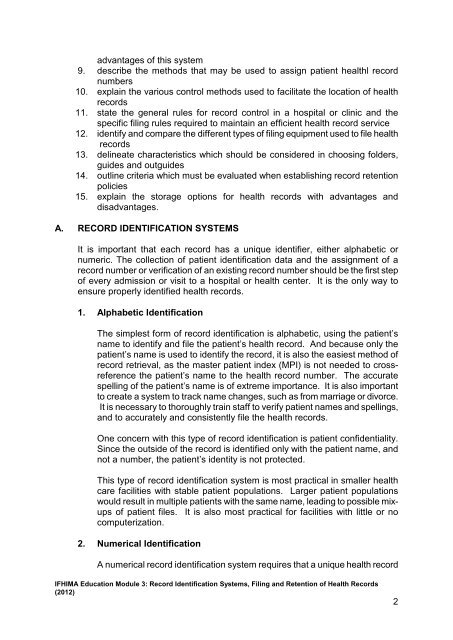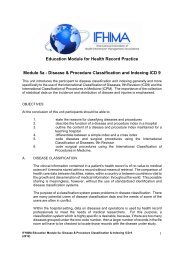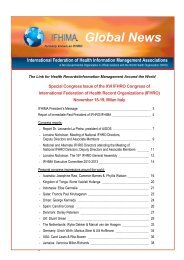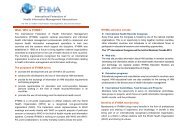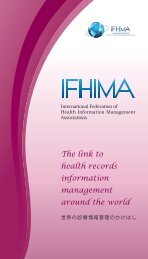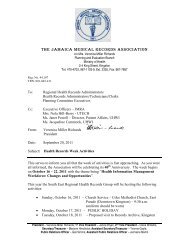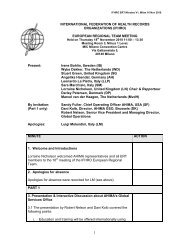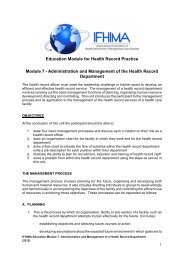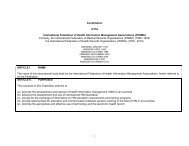Learning Packages for Medical Record Practice - ifhima
Learning Packages for Medical Record Practice - ifhima
Learning Packages for Medical Record Practice - ifhima
Create successful ePaper yourself
Turn your PDF publications into a flip-book with our unique Google optimized e-Paper software.
advantages of this system<br />
9. describe the methods that may be used to assign patient healthl record<br />
numbers<br />
10. explain the various control methods used to facilitate the location of health<br />
records<br />
11. state the general rules <strong>for</strong> record control in a hospital or clinic and the<br />
specific filing rules required to maintain an efficient health record service<br />
12. identify and compare the different types of filing equipment used to file health<br />
records<br />
13. delineate characteristics which should be considered in choosing folders,<br />
guides and outguides<br />
14. outline criteria which must be evaluated when establishing record retention<br />
policies<br />
15. explain the storage options <strong>for</strong> health records with advantages and<br />
disadvantages.<br />
A. RECORD IDENTIFICATION SYSTEMS<br />
It is important that each record has a unique identifier, either alphabetic or<br />
numeric. The collection of patient identification data and the assignment of a<br />
record number or verification of an existing record number should be the first step<br />
of every admission or visit to a hospital or health center. It is the only way to<br />
ensure properly identified health records.<br />
1. Alphabetic Identification<br />
The simplest <strong>for</strong>m of record identification is alphabetic, using the patient’s<br />
name to identify and file the patient’s health record. And because only the<br />
patient’s name is used to identify the record, it is also the easiest method of<br />
record retrieval, as the master patient index (MPI) is not needed to crossreference<br />
the patient’s name to the health record number. The accurate<br />
spelling of the patient’s name is of extreme importance. It is also important<br />
to create a system to track name changes, such as from marriage or divorce.<br />
It is necessary to thoroughly train staff to verify patient names and spellings,<br />
and to accurately and consistently file the health records.<br />
One concern with this type of record identification is patient confidentiality.<br />
Since the outside of the record is identified only with the patient name, and<br />
not a number, the patient’s identity is not protected.<br />
This type of record identification system is most practical in smaller health<br />
care facilities with stable patient populations. Larger patient populations<br />
would result in multiple patients with the same name, leading to possible mixups<br />
of patient files. It is also most practical <strong>for</strong> facilities with little or no<br />
computerization.<br />
2. Numerical Identification<br />
A numerical record identification system requires that a unique health record<br />
IFHIMA Education Module 3: <strong>Record</strong> Identification Systems, Filing and Retention of Health <strong>Record</strong>s<br />
(2012)<br />
2


